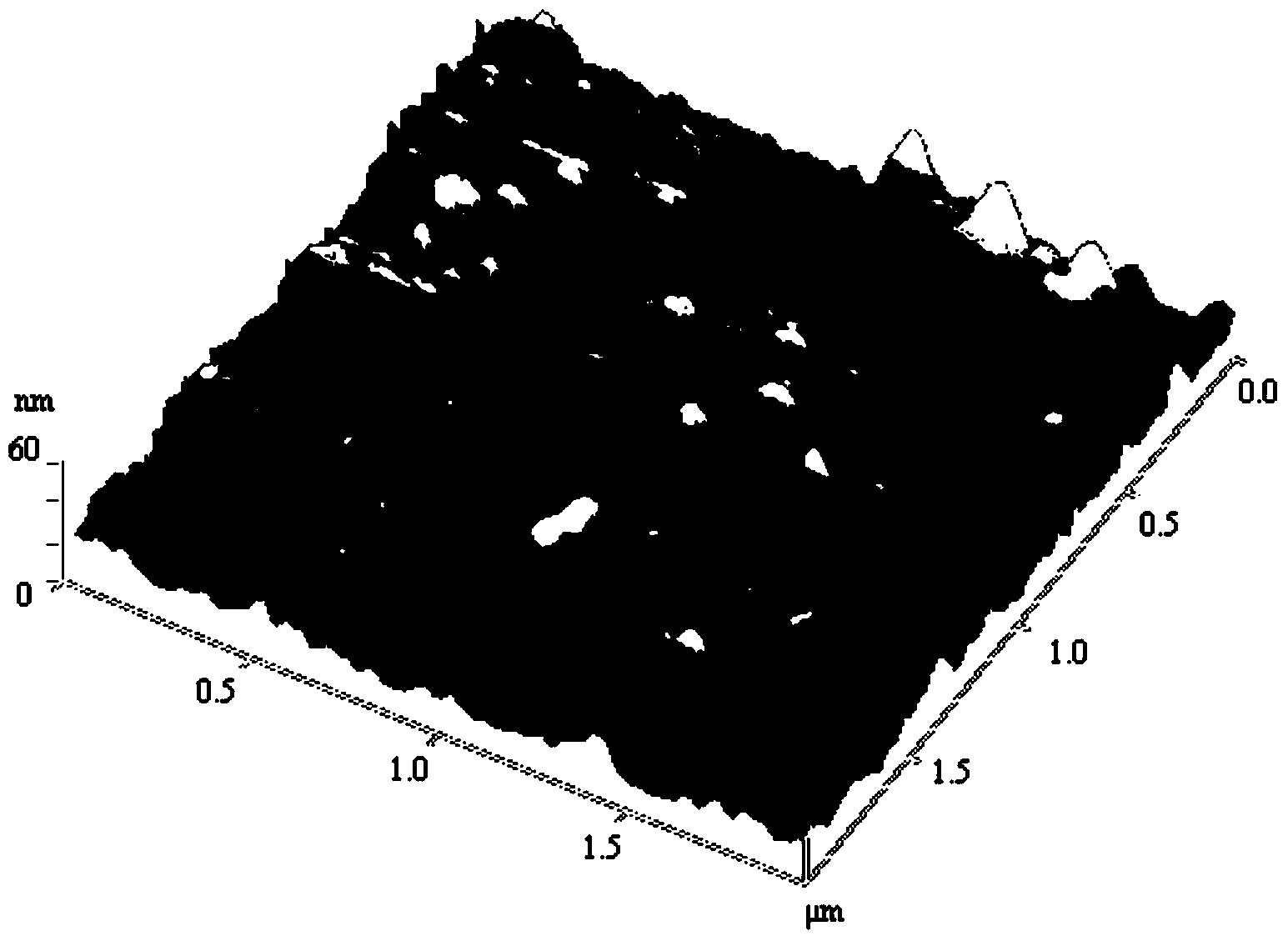Preparation method of p-n junction type ZnO-CoTiO3 room temperature gas-sensitive film
A p-n, room temperature technology, applied in the direction of ion implantation plating, coating, metal material coating process, etc., can solve the problems of inconsistent development trend of gas-sensing probes, waste of energy by heating devices, combustion of combustible gases, etc. performance, short production cycle, and the effect of reducing operating temperature
- Summary
- Abstract
- Description
- Claims
- Application Information
AI Technical Summary
Problems solved by technology
Method used
Image
Examples
Embodiment 1
[0022] 1) Analytical pure TiO 2 Mix it with a polyvinyl alcohol solution with a mass concentration of 7% according to a mass ratio of 100:5, then pressurize at 50MPa, and pre-fire at 500°C for 2h to obtain TiO 2 target;
[0023] will analyze pure Co 3 o 4 Mix with polyvinyl alcohol solution with a mass concentration of 7% according to a mass ratio of 100:5, then pressurize at 50MPa, and pre-fire at 500°C for 2h to obtain Co 3 o 4 target;
[0024] 2) TiO 2 The target material is put into a radio frequency target position of the magnetron sputtering machine, Co 3 o 4 Put the target into another RF target position of the magnetron sputtering apparatus, and then put a Zn target with a diameter of 65 mm, a thickness of 5 mm, and a purity of 99.99% into the DC sputtering target position;
[0025] 3) The Si substrate was ultrasonically cleaned in absolute ethanol for 10 min, then soaked in the mixed solution for 10 min, and finally was ultrasonically cleaned with deionized wa...
Embodiment 2
[0030] 1) Analytical pure TiO 2Mix with polyvinyl alcohol solution with a mass concentration of 5% according to a mass ratio of 100:10, then pressurize at 100MPa, and pre-fire at 500°C for 2h to obtain TiO 2 target;
[0031] will analyze pure Co 3 o 4 Mix with polyvinyl alcohol solution with a mass concentration of 5% according to a mass ratio of 100:10, then pressurize at 100MPa, and pre-fire at 500°C for 2h to obtain Co 3 o 4 target;
[0032] 2) TiO 2 The target material is put into a radio frequency target position of the magnetron sputtering machine, Co 3 o 4 Put the target into another RF target position of the magnetron sputtering apparatus, and then put a Zn target with a diameter of 65 mm, a thickness of 5 mm, and a purity of 99.99% into the DC sputtering target position;
[0033] 3) The Si substrate was ultrasonically cleaned in absolute ethanol for 10 minutes, then soaked in the mixed solution for 10 minutes, and finally cleaned with deionized water for 10 mi...
Embodiment 3
[0040] 1) Analytical pure TiO 2 Mix it with a polyvinyl alcohol solution with a mass concentration of 10% according to a mass ratio of 100:7, then pressurize at 80MPa, and pre-fire at 700°C for 2h to obtain TiO 2 target;
[0041] will analyze pure Co 3 o 4 Mix with polyvinyl alcohol solution with a mass concentration of 10% according to a mass ratio of 100:7, then pressurize at 80MPa, and pre-fire at 700°C for 2h to obtain Co 3 o 4 target;
[0042] 2) TiO 2 The target material is put into a radio frequency target position of the magnetron sputtering machine, Co 3 o 4 Put the target into another RF target position of the magnetron sputtering apparatus, and then put a Zn target with a diameter of 65 mm, a thickness of 5 mm, and a purity of 99.99% into the DC sputtering target position;
[0043] 3) The Si substrate was ultrasonically cleaned in absolute ethanol for 10 minutes, then soaked in the mixed solution for 10 minutes, and finally cleaned with deionized water for 1...
PUM
| Property | Measurement | Unit |
|---|---|---|
| diameter | aaaaa | aaaaa |
| thickness | aaaaa | aaaaa |
| purity | aaaaa | aaaaa |
Abstract
Description
Claims
Application Information
 Login to View More
Login to View More - R&D
- Intellectual Property
- Life Sciences
- Materials
- Tech Scout
- Unparalleled Data Quality
- Higher Quality Content
- 60% Fewer Hallucinations
Browse by: Latest US Patents, China's latest patents, Technical Efficacy Thesaurus, Application Domain, Technology Topic, Popular Technical Reports.
© 2025 PatSnap. All rights reserved.Legal|Privacy policy|Modern Slavery Act Transparency Statement|Sitemap|About US| Contact US: help@patsnap.com


